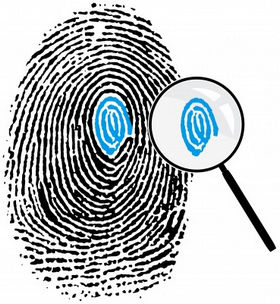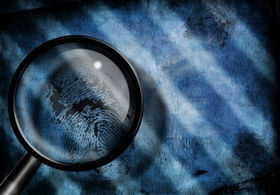Forensic Science Fingerprinting Systems
How Fingerprinting Works
|
Get FREE Info From Schools |
Forensic science fingerprinting systems are very advanced. Learn how forensic fingerprints are taken and the history of fingerprinting in forensic science jobs.
One of the most recognizable tools in fighting justice is fingerprinting. While the practice has only been around for a hundred years, its still one of the oldest forms of collecting evidence and proving a person was at least present at the scene of a crime.
Everyone knows about fingerprinting. We do it for fun as kids in school, we do it for work when being employed by certain companies, and we sometimes have to do it for other reasonsthough hopefully not the kind that lands you behind bars.
Its an activity that has become common knowledge to the populace by way of books, television, and film: police will find your fingerprints if you left them at a crime scene.
But how does it actually work? What kinds of tools are used to collect forensic science fingerprints? And when did this form of forensic science really start?
Forensic Science Fingerprinting System: How it Works
Everyones fingerprints are different. We all know that, right? Well, the people who pioneered fingerprinting for crime solving discovered a way to see just how different each print isto measure them and develop a code based on the various identifying marks of each persons prints.
 |
Every print is made up of loops, arches, and whorls. When whorls appear on certain fingers in certain places they are given a numerical value. These values are added and put through various mathematical equations until a certain unique signature of numbers is found for each print. Then matching them becomes a matter of finding similar codes.
Of course, nowadays, forensic fingerprint specialists use computers instead of codes. There are databases that can test the values of each loop, arch, and whorl to see if they match with any known prints.
Fingerprints can be collected from anywhere. They are found at a crime scene on windows, door handles, weapons, and even the inside of gloves.
They can also be taken from a suspect directly to see if they match those found at the scene of a crime.
Specialists are in charge of collecting and analyzing these prints, and they are trained for years in this subtle art.
History of Fingerprinting
 |
The genesis of modern forensic science fingerprinting took place in 1892, when Sir Francis Galton began work based on the idea of being able to identify a person using their fingerprints.
An Argentinean colleague by the name of Vucetich used Galtons research to create the first fingerprint filing system: icnofalagometrico. While primitive in design, it paved the way toward modern fingerprinting.
The next major development in fingerprinting was the Ten Print System. Developed by Sir Henry Edward, this was the most widely used system of fingerprinting in the world until modern computers came along. The Ten Print System introduced the values of loops, arches, and whorls.
Since the dawn of the digital age, fingerprinting has become a much easier activity. And because of the precision with which computers can read fingerprints, prints can now be drawn from virtually anywhere.
Forensic Fingerprints: The Tools of the Trade
Naturally, there are a great many different tools used in forensic science fingerprinting. The ones most of us are familiar with include powder and a brush. But in the modern age, such tools are almost prehistoric.
Today, there are great techniques that can be used in addition to powders and photographs. Some of these include:
- Ninhydrin
- Diazafluorenone
- Vacuum Metal Deposition
- Ethyl Cyanoacrylate
- Livescan Devices
|
Get FREE Info From Schools |
Return from Forensic Science Fingerprinting to Forensic Jobs
Return from Forensic Science Fingerprints to Criminal Justice Careers





